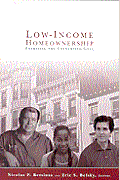They say you can’t judge a book by its cover. Increasingly in the United States, you also can’t judge a library’s value to its community by simply its books. Let us explain.
In a previous blog post, we’ve noted the importance of “third places” in strengthening communities – meaning those places that are neither one’s home (first place) nor workspace (second place). A range of such third places, from churches to beauty salons, play an important role in community building. They are the informal spaces that are often mainstays in a neighborhood, places where both random and intentional in-person relationships are made.
Several things are necessary for a particular place to play this role. Location and accessibility are important, of course. But so are trust and a sense of neutrality; they are usually the keys to success, whether the place is a house of worship, a family-owned diner, or a barbershop.
As the earlier piece explained, public spaces and buildings can become important and successful third places. And one particularly interesting, emerging and important example is the public library.
Public libraries exist in urban, suburban, and rural neighborhoods, and typically they have a long history in their community. According to a 2015 Pew survey, almost two-thirds of adult Americans say that closing their local library would have a major impact on their community. As Pew found, over 90 percent of adults think of public libraries as “welcoming and friendly places,” and about half have visited or otherwise used a public library in the last 12 months.
Reimagining the Librarian
A reason public libraries are seen as such important third-place institutions is that they and their librarians have gradually taken on other functions well beyond lending out books. In many communities, librarians are also ad hoc social workers and navigators. They help local people figure out the complexities of life, from navigating the health system to helping those with housing needs. This “go-to” role has influenced library programming and events, with libraries providing advice and connections to health, housing, literacy, and other areas.
Other sectors, such as health care, increasingly see public libraries as a critical link to a community. For instance, the National Library of Medicine is helping local librarians to be more effective local navigators by regularly hosting webinars and training sessions for local librarians on how to navigate social services, aging, mental health, welfare and public assistance, housing resources, health care, and education and employment resources.
A reason public libraries are seen as such important third-place institutions is that they and their librarians have gradually taken on other functions well beyond lending out books.
Of course, most librarians were not trained to handle many of the issues and requests they now encounter, such as providing guidance on resources for substance abuse and mental health issues. In response, some libraries have hired in-house social workers to help address the needs of visitors. San Francisco Public Library, where an estimated 15 percent of the library’s visitors are homeless, was one of the first. A case worker is able to do a full assessment, and help arrange case management and housing assistance, in a respectful and neutral safe space.
Addressing Population Health
Other cities have followed suit. A recent study from researchers at the University of Pennsylvania explains how Philadelphia’s libraries, as a trusted local institution, have partnered with the University to address population health and social determinants of health. With librarians now trained as “community health specialists,” the libraries offer programs and assistance for people of all ages and socio-economic backgrounds. In 2015, almost 10 percent of the libraries’ 5.8 million in-person visitors accessed specialized programs and assistance in such areas as nutrition, trauma and mental health resources, youth leadership and healthy behaviors. As the researchers conclude, “Libraries and librarians contribute two particular strengths to advance a culture of health: accessibility and trustworthiness.”
Many libraries have become front-line institutions in addressing the needs of the homeless. For instance, the Dallas Public Library in 2013 launched a Homeless Engagement Initiative. The emphasis is on making all library visitors feel welcome. The library runs a Homeless Engagement and Leadership Program (HELP) Desk where customers can obtain one-on-one assistance with job applications and resumes, food and housing referrals, legal aid, and library music and arts programs.
Libraries focus on a wide range of populations with particular needs, including seniors, veterans, and immigrants. The Hartford Public Library in Connecticut, for instance, has created The American Place (TAP), a free program that supports and assists new immigrants acclimate to their new city. TAP partners with community leaders and organizations to provide employment services, English as a new language classes, legal orientation programs, Know-Your-Rights forums, and referrals to other services, in five different languages. Meanwhile the Queens Borough Public Library in New York, has partnered with the Queens Health Network, the largest healthcare provider in the area, to design health-related and community-centered programming targeting the needs of its immigrant populations.
Libraries as Key Hubs
In health care and other areas, libraries are combining the access and trust characteristics of a third place with a hub role in the community – using partnerships with other institutions to connect people with services and help. There are plenty of challenges with this role. Community needs and the requests of visitors are increasingly straining or overwhelming library funds; and although many libraries are retraining staff, achieving the appropriate mix of skills is difficult. But as the University of Pennsylvania study found, “public libraries are dynamic, socially responsive institutions, a nexus of diversity, and a lifeline for the most vulnerable among us.” More policymakers and government officials need to recognize this, and incorporate libraries into budgets and plans to build a culture of health and upwardly mobile communities.
The Brookings Institution is committed to quality, independence, and impact.
We are supported by a diverse array of funders. In line with our values and policies, each Brookings publication represents the sole views of its author(s).










Commentary
How public libraries help build healthy communities
March 30, 2017